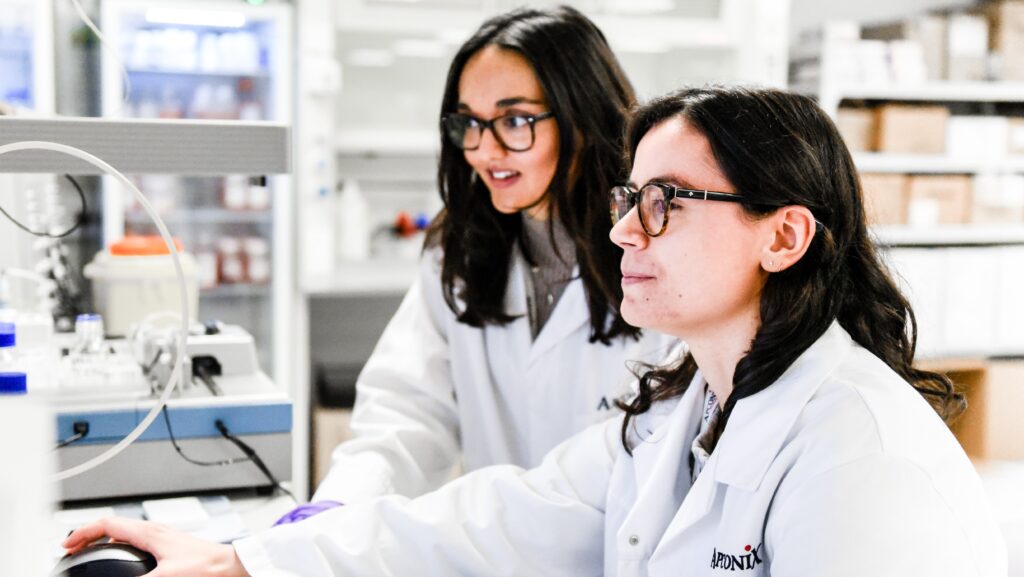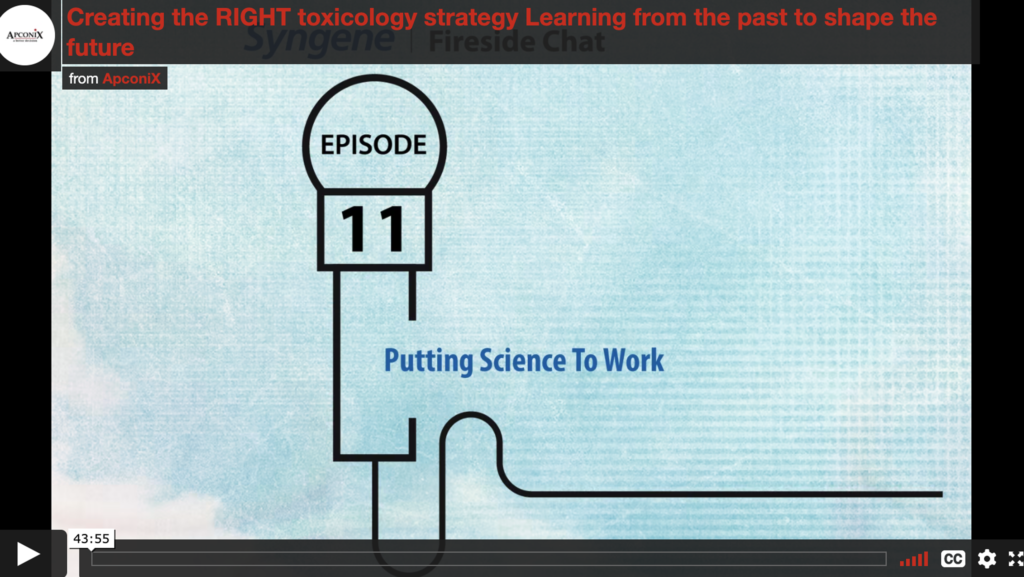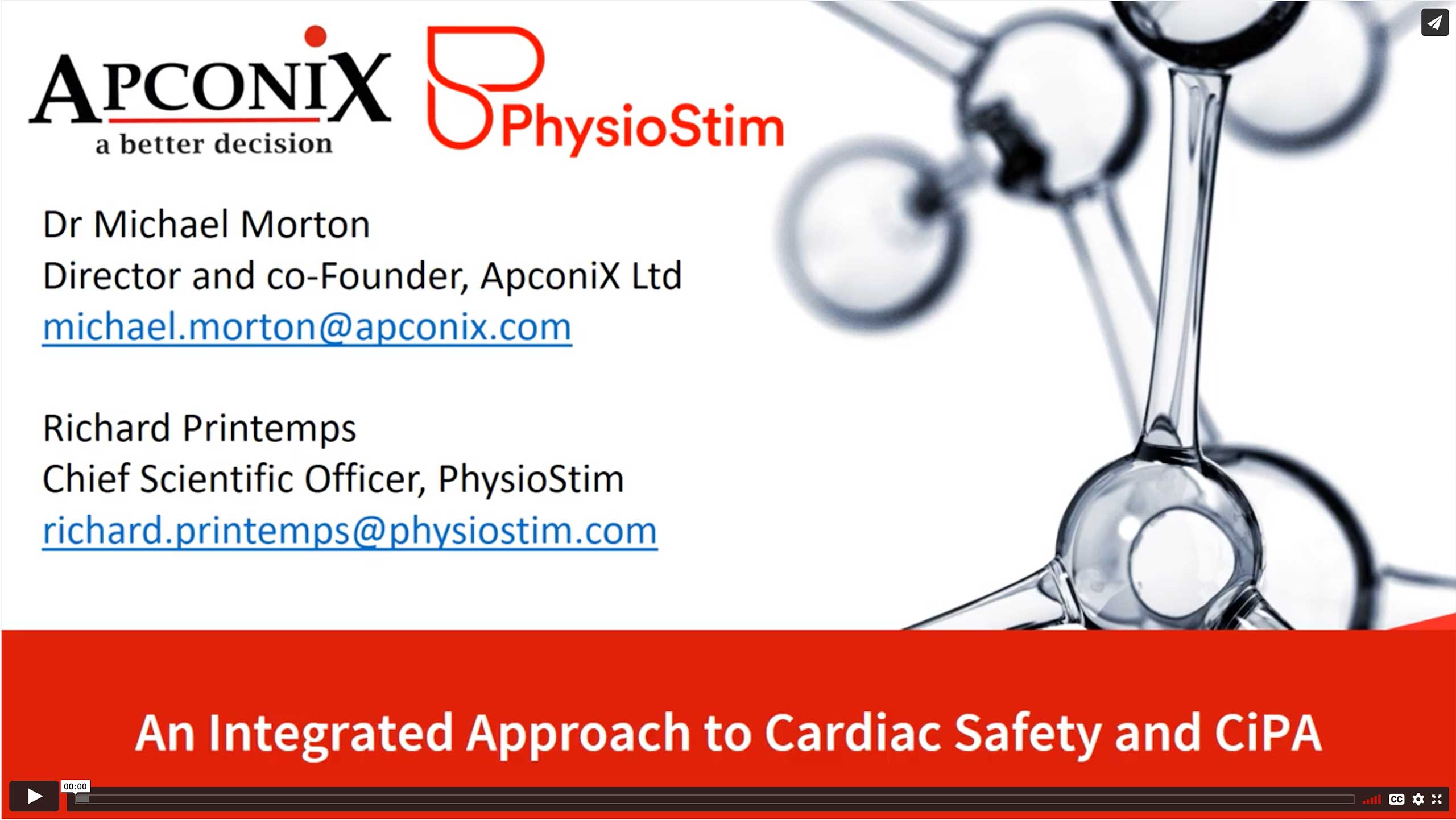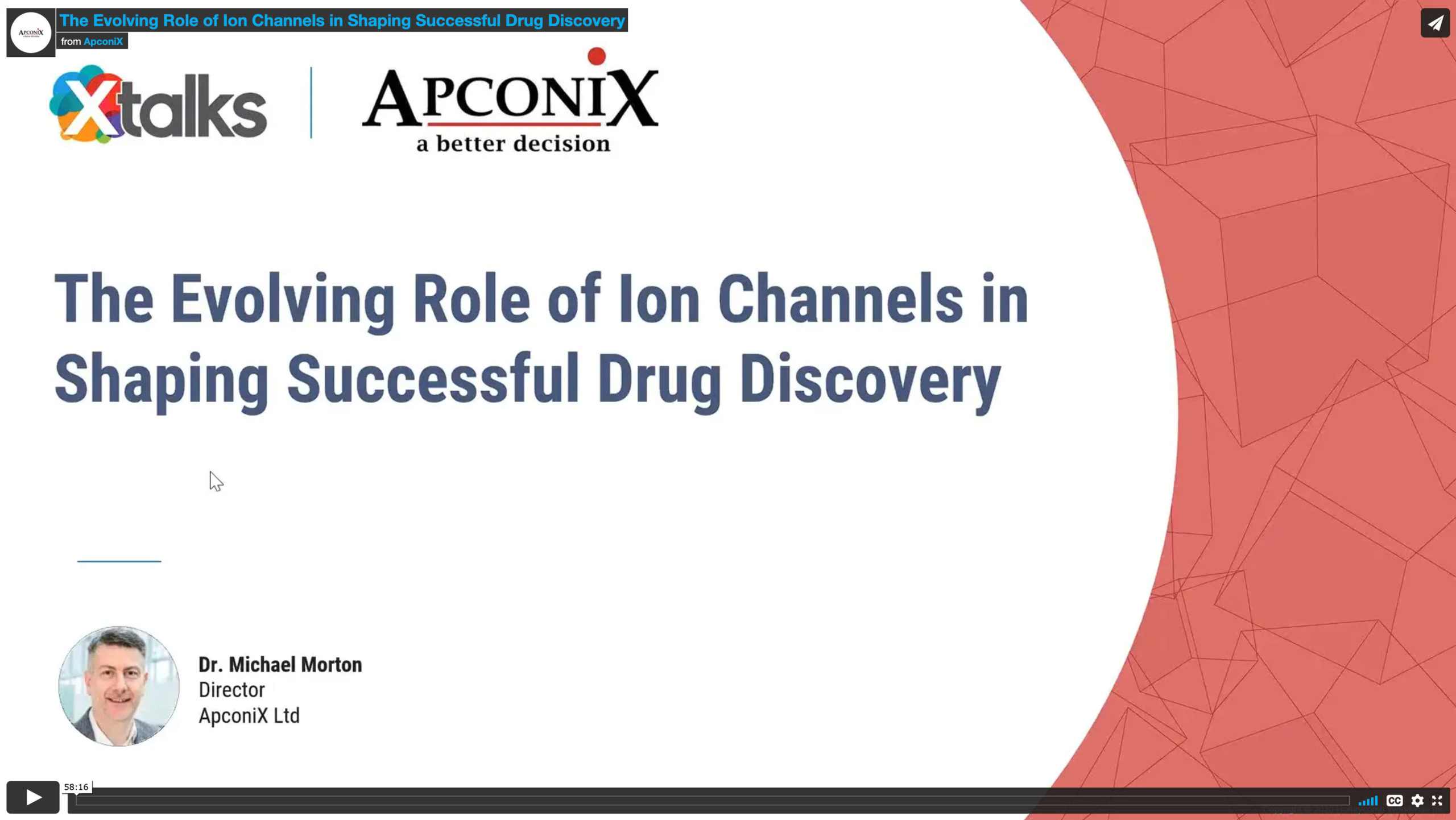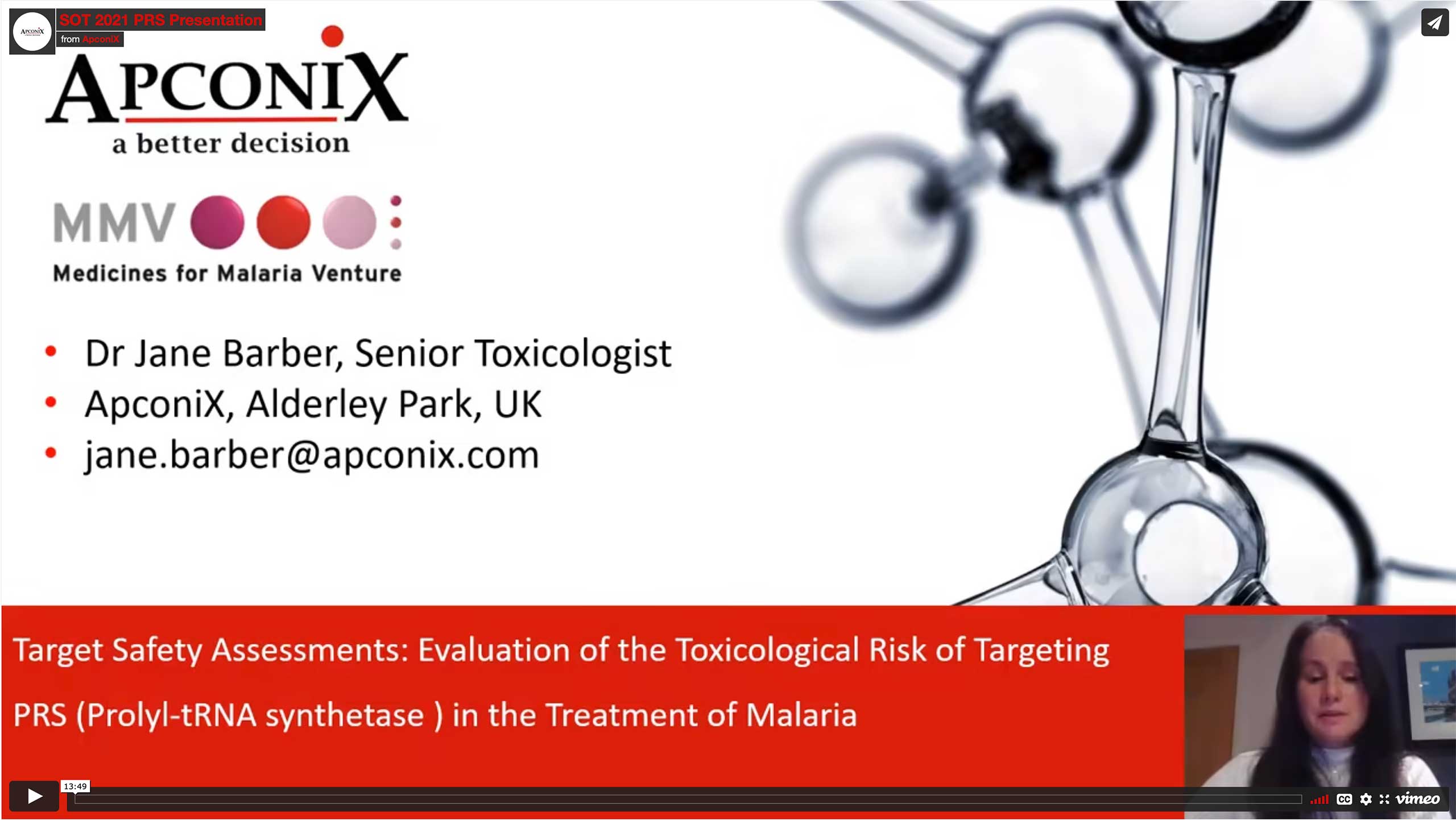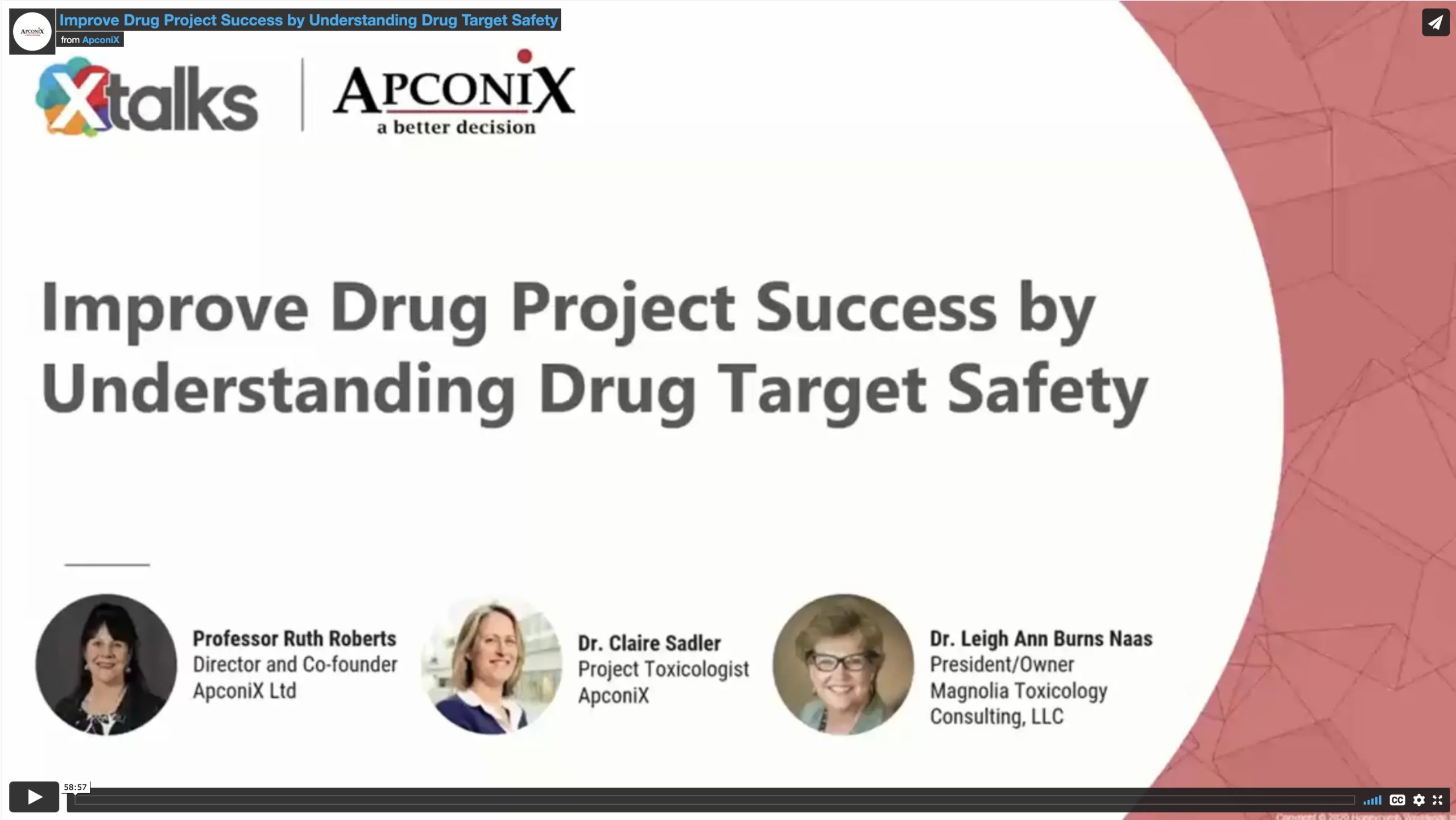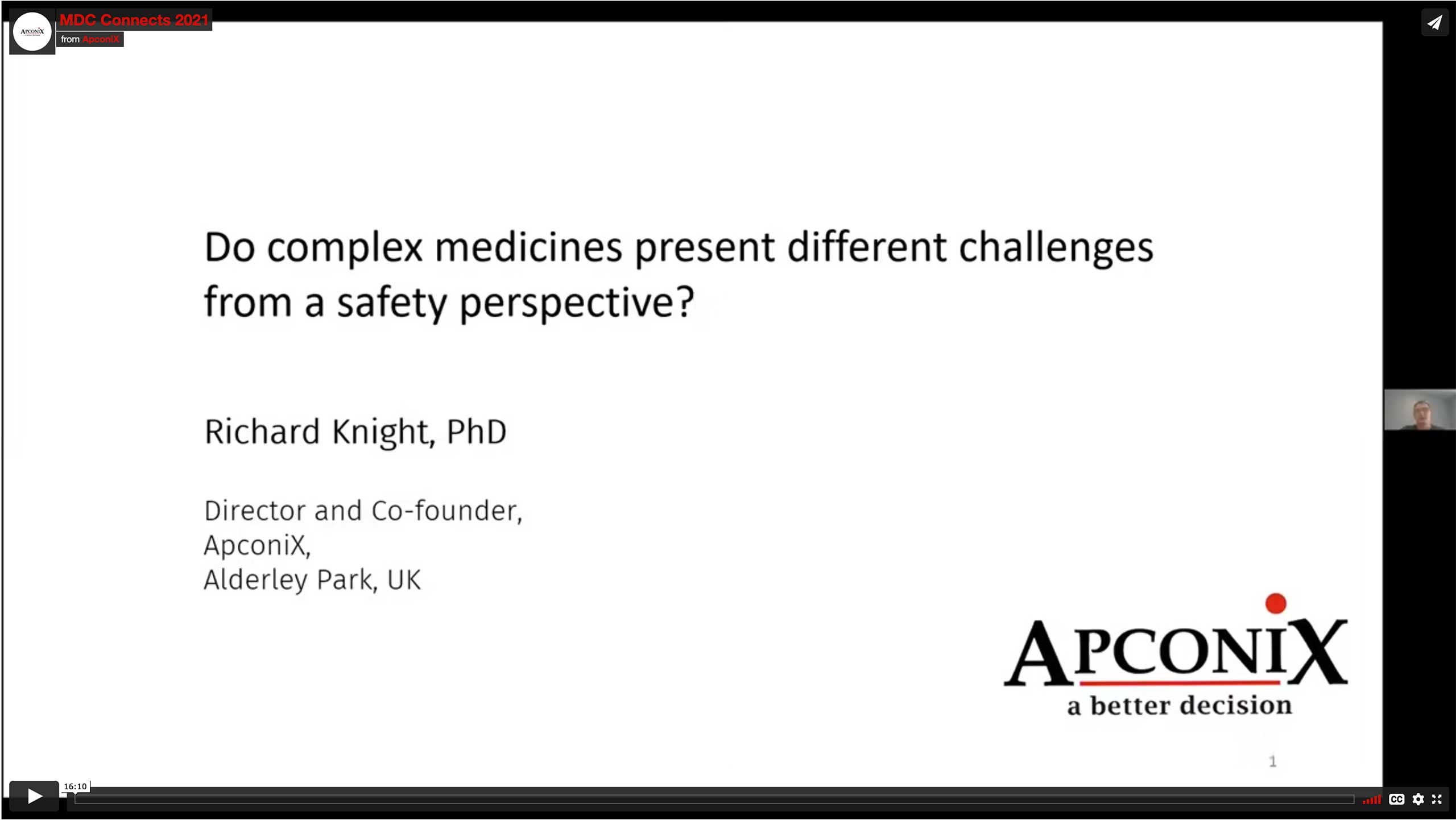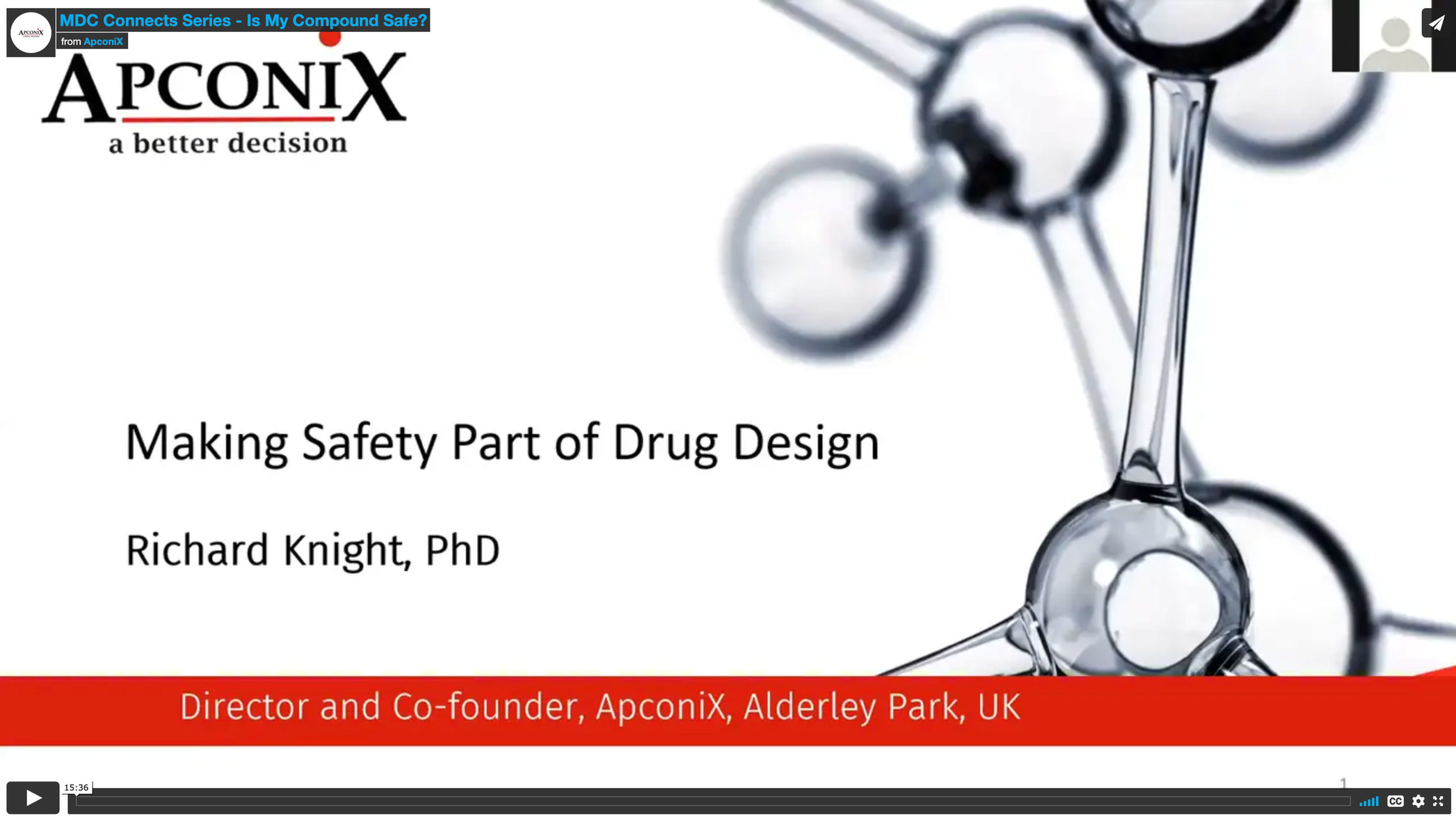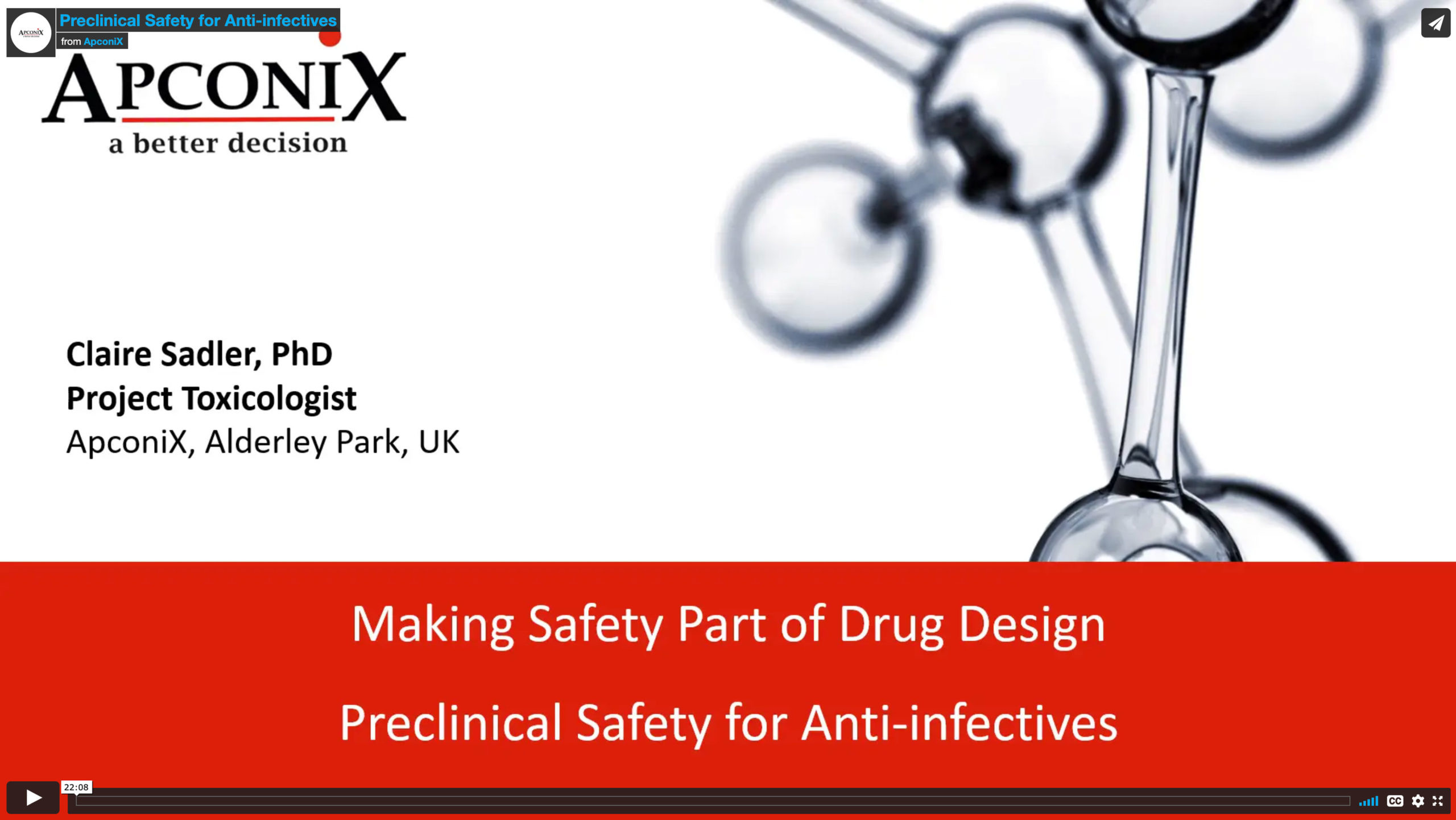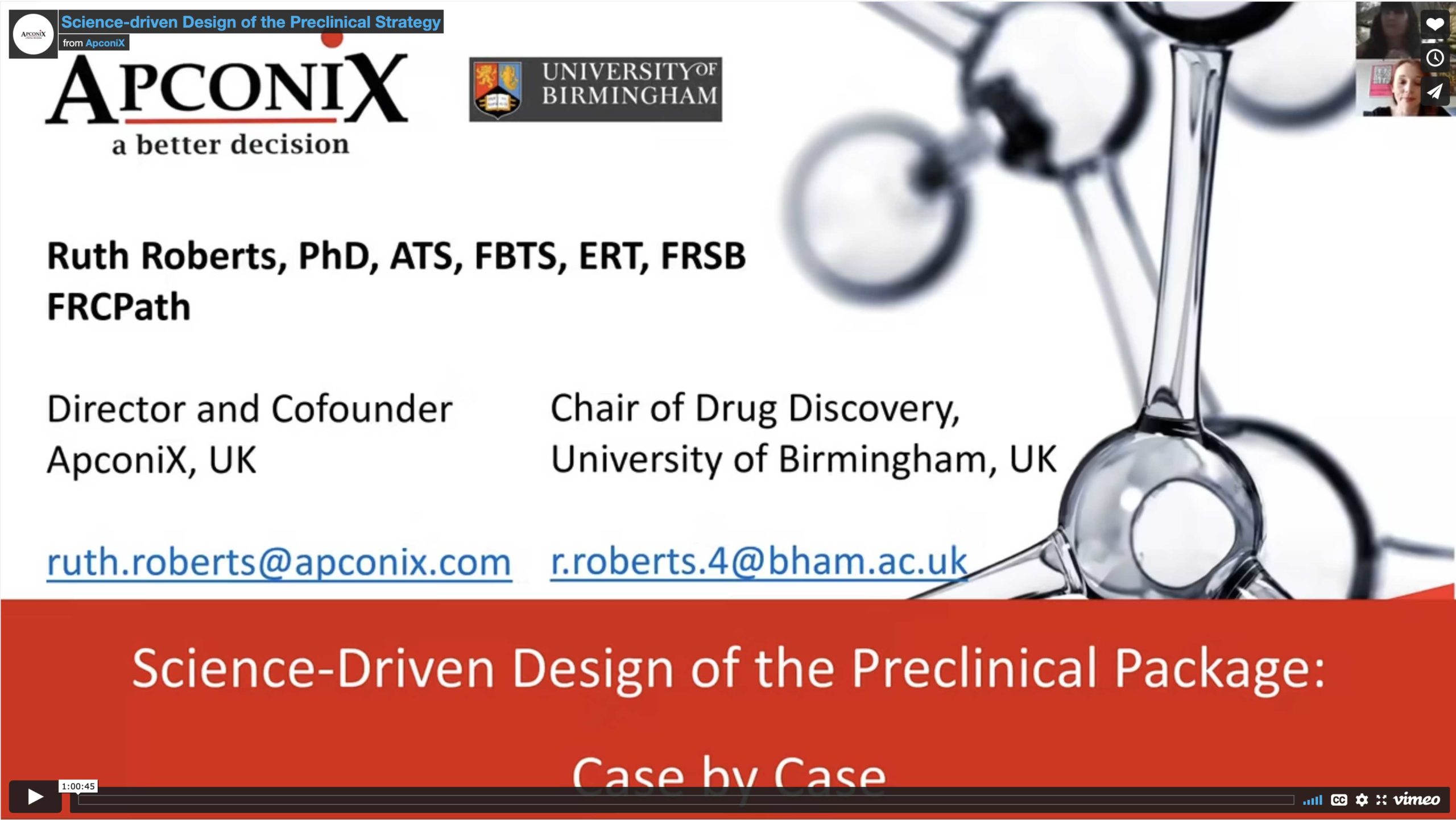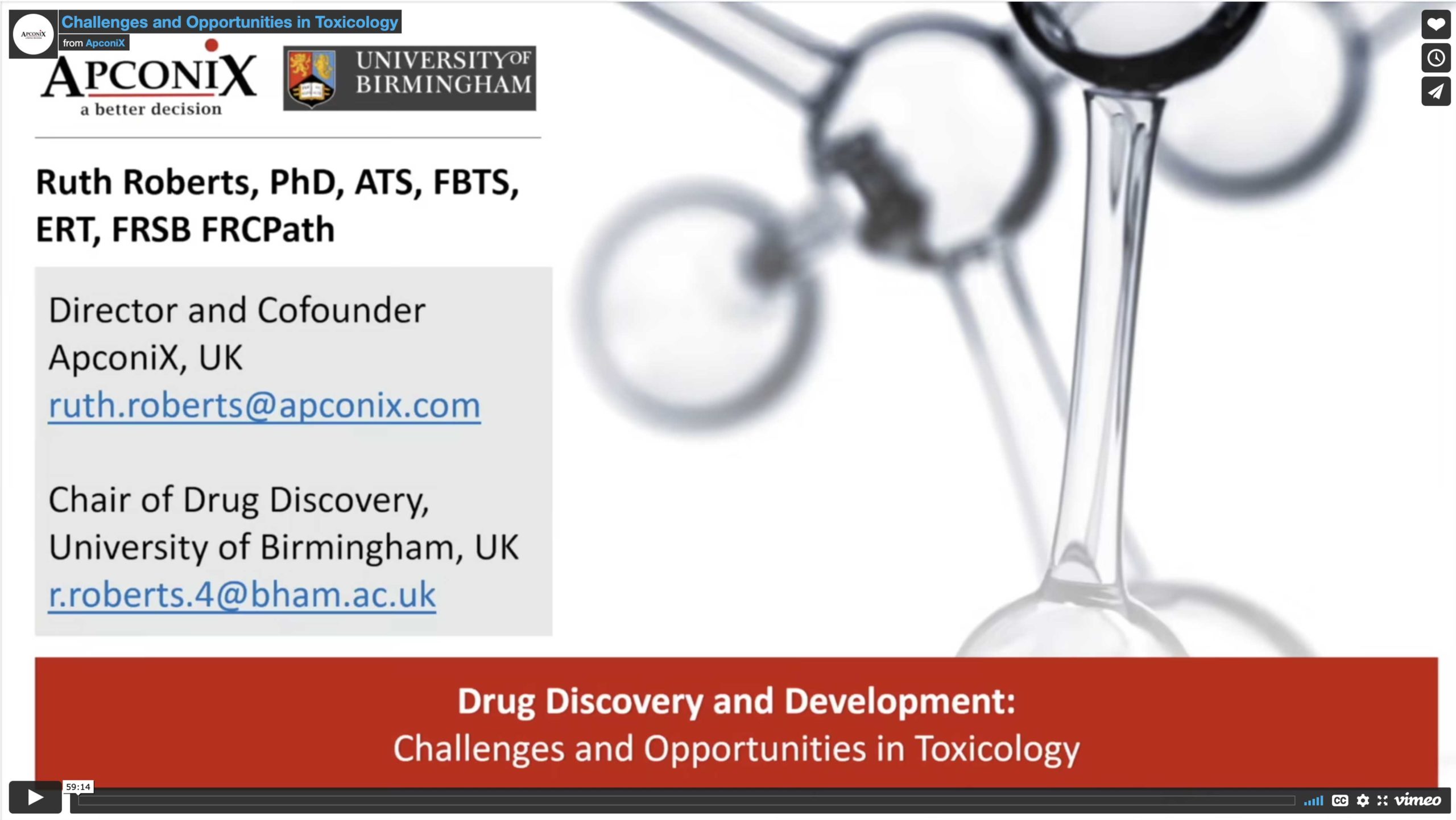Our Videos
How Does the FDA Modernisation Act 2.0 Impact Seizure Liability Testing in Drug Discovery?
This DDW podcast features Ruth Roberts and Michael Morton, co-founders of ApconiX, and Dr Kimberly Rockley, ApconiX, who discuss novel alternative methods and the impact of the FDA Modernisation Act 2.0 in relation to seizure liability as well as talking about the importance of evaluating seizure liability.
How a Target Safety Assessment Supports the Drug Development Process Podcast
This Drug Discovery World podcast Professor Ruth Roberts, Co-Founder ApconiX, and Claire Sadler, Project Toxicologist, discuss the benefits of carrying out a target safety assessment (TSA) during drug discovery and development whenever a biological target is going to be modulated.
The Benefits of Early Ion Channel Screening Podcast
This Drug Discovery World podcast Dr Michael Morton, Director and Co-founder, ApconiX, and Dr Kimberly Rockley of ApconiX discuss the benefits of early ion channel screening. The podcast covers the hERG ion channel and its importance in cardiac safety screening in drug discovery.
The latest advancements driving neuroscience drug discovery research
You will hear from Dr Isaac Klein Chief scientific officer at Dewpoint Therapeutics, Dr Sam Clark CEO of Terran Biosciences and Professor Ruth Roberts Co-founder and Director of Safety Science at ApconiX. This is hosted by DDW and sponsored by ApconiX.
The Evolving Role of Ion Channels in Shaping Successful Drug Discovery
This webinar will present the critical role of ion channels in drug discovery, and how this role is evolving. The listener will learn about advances in ion channel biology, experimental technologies and in vitro models, new ion channel ligands, and toxicological considerations.
Evaluate the Toxicological Risk of Targeting Prolyl-Trna Synthetase, PRS In The Treatment of Malaria.
This presentation discusses work was carried out with MMV the not-for-profit Medicines for Malaria Venture. followed by a summary of the research done around the physiological role of the PRS target.
Making Safety a Part of Drug Design – Preclinical Safety for Anti-infectives
In this webinar, Claire Sadler discussed the toxicological challenges and pitfalls of antibiotic discovery programs. Potential safety risks are the major reason for terminating a program in early phases of antibiotic drug development.



